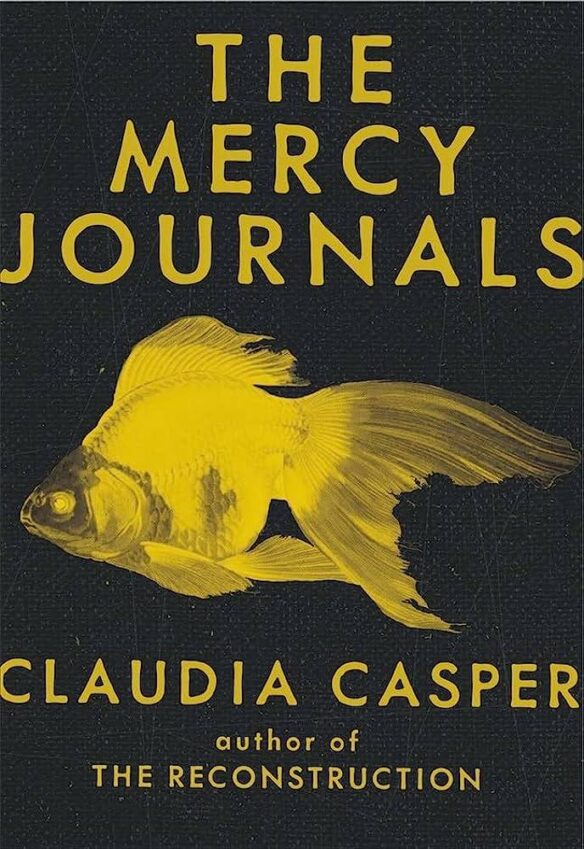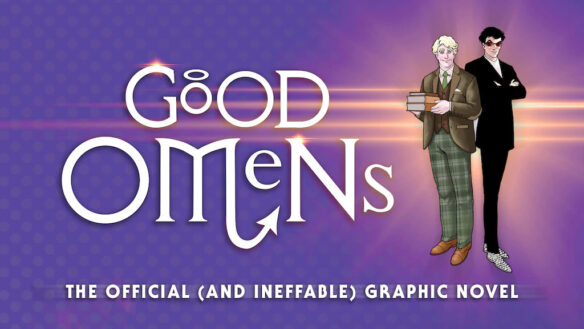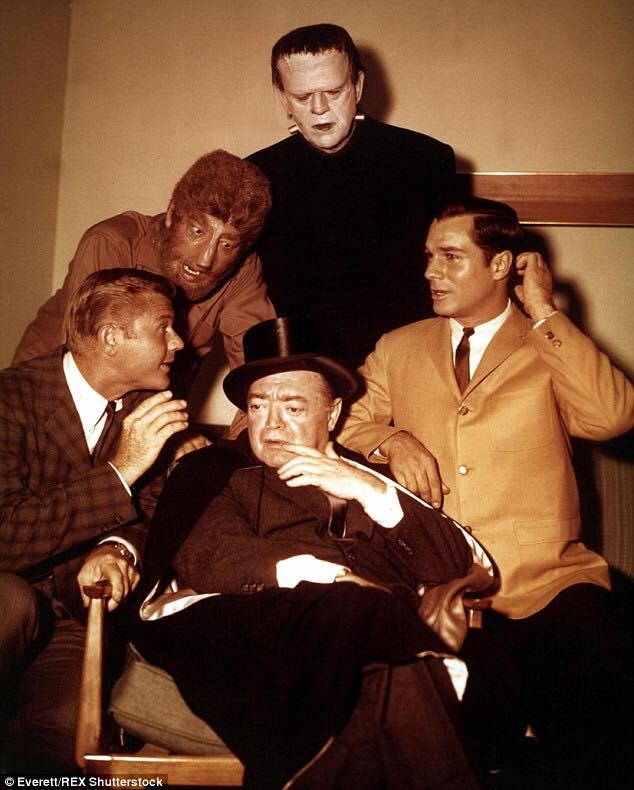(1) SETI CONNECTION TO MISSING SUBMERSIBLE. An international effort has been launched to find a submersible with five people on board that went missing Sunday on a trip to view the wreckage of the Titanic. According to CNN, a prominent Pakistani father and son are on board the missing sub, which turns out to be of genre interest.
…While the names of those on board have not been released by the authorities, British businessman Hamish Harding, Pakistani billionaire Shahzada Dawood and his son Sulaiman Dawood, and French diver Paul-Henri Nargeolet have been confirmed to be on board the craft.
The fifth person on board is Stockton Rush, the CEO and founder of the company leading the voyage, Ocean Gate, according to a source with knowledge of the mission plan. Ocean Gate did not respond to CNN’s request for comment…
Shahzada Dawood is on the Board of Trustees of the SETI Institute, an organization whose scientists “are looking for proof – not merely of life elsewhere – but of intelligent beings in other star systems.”
(2) SFWA SILENT AUCTION INCLUDES JAMES E. GUNN COLLECTION. SFWA’s 3rd Silent Auction, which opened yesterday, includes an “Exclusive James E. Gunn collection”.

July 12, 2023, marks the start of James E. Gunn’s centenary. He died December 23, 2020 – one week after finishing his final story, which sold his final day.
Jim was a Damon Knight Memorial Grand Master, SF Hall of Fame inductee, first (with Jack Williamson) to offer SF courses in academia, former President of SFWA and SFRA, and “Science Fiction’s Dad” to the generations of authors, editors, and educators he mentored. Jim’s devotion to “Saving the world through science fiction” inspired us to reach higher, grow deeper, and become ever-more humane. His tireless dedication to what SF does was the essence of his magic, and why so many called him Dad. Our world is richer because of him.
For auction is a collection of Jim’s works, unread NOS.
Hardcovers of Transcendental, Transformation, and Transgalactic – his only trilogy, and his final books; two Easton Press leather editions: Gift from the Stars (signed first edition), and Kampus; his Hugo-winning illustrated SF history, Alternate Worlds (new, updated edition); volumes 1-4 of his essential anthologies-as-history, The Road to Science Fiction, with teaching guide; hardcovers collections Human Voices and Some Dreams Are Nightmares; new trade paper and early paperback of Jim’s classic collab with Jack Williamson, Star Bridge; hardcover and early paperback of The Dreamers; new trade paper of his best-selling The Listeners, which inspired Carl Sagan to write Contact and others to form SETI; plus a 1983 business card for his (first of its kind) Center for the Study of SF, SFWA Grand Masters trading card, and Transcendental bookmark.
Donated by the Ad Astra Institute for Science Fiction and the Speculative Imagination, spiritual successor of Jim’s original Center, run by his protégés Chris McKitterick and Kij Johnson.
(3) TRIVIA CONNECTIONS. [Item by Nickpheas.] Given the regular notes of Jeopardy! questions, here’s one from the long running BBC radio 4 show Round Britain Quiz.
Q8 (from Nigel Choyce) Which of these is the leader and how many are missing: A cosmetic company that might come calling; a Victorian actress who travelled in the Tardis; a school of Buddhism emphasising the value of meditation; the Baker Street detective aided by a Tinker?
The question can be heard at about 22.30 through the episode.
(4) READ BAEN MEMORIAL AWARD STORY. Brad Zeiger’s 2023 Jim Baen Memorial Short Story Award winning story “The Insomniac” is now available as a free read on the Baen Books website.
(5) “I KNOW.” NO, YOU DON’T. Phil Nichols and Colin Kuskie devote episode 30 of the Science Fiction 101 podcast to “The Secrets George Lucas Kept From Leigh Brackett”.
Phil and Colin dig into “Star Wars Sequel”, the unfilmed 1978 script by science fiction legend Leigh Brackett which became Star Wars: The Empire Strikes Back. We look at what made it into the finished film and what got junked, and consider whether Star Wars creator George Lucas was keeping his screenwriter in the dark!
If you’ve never read Brackett’s script, you can find two versions of it online. There’s a PDF scan of the original typescript, which shows all of her hand-corrections and notes – fascinating for its details, if you can make them out. Or there’s this transcript, which is a lot easier to read but loses some of the fun.
For a fascinating, in-depth discussion of how “Star Wars Sequel” developed into The Empire Strikes Back, sit back and watch this interview with screenwriter Larry Kasdan, who wrote the final draft of the film’s script.
(6) FATHOMING COPYRIGHT WHERE AI IS INVOLVED. Michael Capobianco has a post about “Copyright, Contracts, and AI-Generated Material” at Writer Beware.
On March 16, 2023, the United States Copyright Office issued a publication: Copyright Registration Guidance: Works Containing Material Generated by Artificial Intelligence. The full text can be found here.
The Copyright Office’s Guidance does not have the force of law and will change as the situation evolves, especially as legal precedents are created under US law, but, as of the time of this post, it is effectively the policy in force in the United States.
The main takeaway from the Guidance can be summarized thus: the only parts of a work that are copyrightable are the human-contributed ones, and the work is not copyrightable if an AI technology determines the expressive elements of the work and the creativity is not the product of human authorship. In cases where there are both AI-generated and human-authored elements, copyright will only protect the human-authored aspects of the work, which are “independent of ” and do “not affect” the copyright status of the AI-generated material…..
(7) U.F.O.S SOUND LIKE A N.I.C.E. IDEA. Ross Douthat tells New York Times readers that “This C.S. Lewis Novel Helps Explain the Weirdness of 2023”.
Recently I reread C.S. Lewis’s 1945 novel, “That Hideous Strength,” the last book in his Space Trilogy, and since I wrote about aliens last weekend it seems like a good week to talk a little bit about the novel’s contemporary relevance….
…The story introduces a near-future Britain falling under the sway of a scientistic technocracy, the National Institute of Coordinated Experiments (N.I.C.E.), which looks like the World State from Huxley’s “Brave New World” in embryo. But as one of the characters is drawn closer to N.I.C.E.’s inner ring, he discovers that the most powerful technocrats are supernaturalists, endeavoring to raise the dead, to contact dark supernatural entities and even to revive a slumbering Merlin to aid them in their plans.
I’ll say no more about the plot mechanics except to observe that they boldly operate in the risky zone between the sublime and the ridiculous. But just from that sketch I’ll draw out a couple of points about the book’s interest for our own times.
First, the idea that technological ambition and occult magic can have a closer-than-expected relationship feels quite relevant to the strange era we’ve entered recently — where Silicon Valley rationalists are turning “postrationalist,” where hallucinogen-mediated spiritual experiences are being touted as self-care for the cognoscenti, where U.F.O. sightings and alien encounters are back on the cultural menu, where people talk about innovations in A.I. the way they might talk about a golem or a djinn.
The idea that deep in the core of, say, some important digital-age enterprise there might be a group of people trying to commune with the spirit world doesn’t seem particularly fanciful at this point. (For a small example of what I mean, just read this 2021 account of life inside one of the stranger tech-associated research institutes.) Although like some of the characters in “That Hideous Strength,” these spiritualists would probably be telling themselves that they’re just doing high-level science, maybe puncturing an alternate dimension or unlocking the hidden potential of the human mind.
Then, too, the book’s totalitarian dystopia is interesting for being incomplete, contested and plagued by inner rivalries and contradictions. Unlike in “Brave New World” and “1984,” we don’t see a one-party regime holding absolute sway; in Lewis’s story, we see a still-disguised tyranny taking shape but still falling prey to various all-too-human problems, blunders and failures that contrast with the smooth dominance of Orwell’s O’Brien or Huxley’s Mustapha Mond….
The novel’s emphasis on the limitations of any attempted secret government, finally, connects specifically to our peculiar U.F.O. discourse, where we suddenly have a government whistle-blower claiming knowledge of a 90-year conspiracy and, apparently, a chorus of anonymous sources encouraging belief.
I wrote a Twitter thread after my column, explaining why even independent of the likelihood of alien visitors or interdimensional encounters, I find it hard to imagine the kind of long conspiracy depicted by the whistle-blower: The secrets involved would be too big not to tempt would-be heroes of disclosure, the breadth of infrastructure would be too hard to hide, the political complexity and turmoil of the world would create too many opportunities for revelations (because you would need China, Russia and other powers to be in on it as well) and so on.
If there were an alien cover-up, though, I would imagine it would look more like the secrets held by N.I.C.E. in “That Hideous Strength.” …
(8) TAX-EXEMPT AT LAST. The Science Fiction Poetry Association informed members today that they have received the official confirmation from the IRS of SFPA’s 501(c)(3) status, which secures the organization’s federal tax exempt standing.
(9) RUSHDIE’S LATEST HONOR. Winner of “The 2023 German Book Trade’s Peace Prize: Salman Rushdie” reports Publishing Perspectives.
The board of the Peace Prize of the German Book Trade has announced today (June 19) that Salman Rushdie is the winner of this year’s honor, “for his indomitable spirit, for his affirmation of life, and for enriching our world with his love of storytelling.”
…As is this award’s tradition, the honor will be conferred in a ceremony on the closing day of Frankfurter Buchmesse (October 18 to 22), at the Paulskirche, a program to be broadcast live on German public television (SDF) at 11 a.m. The award carries a purse of €25,000 (US$27,302).
(10) MICHAEL A. BANKS (1951-2023). Writer and editor Michael A. Banks (Alan Gould), a longtime member of the Cincinnati Fantasy Group, died June 19 of cancer. He was 72.
In the SF field, he is perhaps best known for nonfiction works about the genre (including Understanding Science Fiction, 1980) and his collaborations with Mack Reynolds. His first published story was “Lost and Found” (1978) with George Wagner. Banks wrote several novels to his credit, including The Odysseus Solution, with Dean R. Lambe. He also worked as an acquisitions editor for publishers, including Baen Books and Harlequin. He wrote dozens of nonfiction books.
(11) MEMORY LANE.
2016 – [Written by Cat Eldridge from a choice by Mike Glyer.]
So the Beginning this Scroll is from Claudia Casper’s The Mercy Journals.
She’s a Canadian writer who’s best known for The Reconstruction, about a woman who constructs a life-sized model of the hominid Lucy for a museum.
And now for our Beginning…
On October 15, 2072, two Moleskine journals were found wrapped in shredded plastic inside a yellow dry box in a clearing on the east coast of Vancouver Island near Desolation Sound. They were watermarked, mildewed, and ragged but legible, though the script was wildly erratic. Human remains of an adult male were unearthed nearby along with a shovel and a 9mm pistol. Also found with the human remains were those of a cougar. The journals are reproduced in their entirety here, with only minor copy-editing changes for ease of reading.
March 9, 2047 | My name is Allen Levy Quincy. Age 58. Born May 6, 1989. Resident of Canton Number 3, formerly Seattle, Administrative Department of Cascadia. This document, which may replace any will and testament I have made in the past, is the only intentional act of memory I have committed since the year 2029. I do not write because I am ill or because I leave much behind. I own a hot plate, three goldfish, my mobile, my Callebaut light, my Beretta M9, the furniture in this apartment, and a small library of eleven books.
March 10 | I sit at my kitchenette island in this quasi-medieval, wired-by-ration, post nation-state world, my Beretta on my left, bottle of R & R whiskey on my right, speaking to the transcription program on my mobile.
I was sober for so long. Eighteen years. I was sober through what seems to have been the worst of the die-off. Three and a half to four billion people, dead of starvation, thirst, illness, and war, all because of a change in the weather. The military called it a “threat multiplier.
You break it, you own it—the old shopkeeper’s rule. We broke our planet, so now we owned it, but the manual was only half written and way too complicated for anyone to understand. The winds, the floods, the droughts, the fires, the rising oceans, food shortages, new viruses, tanking economies, shrinking resources, wars, genocide—each problem spawned a hundred new ones. We finally managed to get an international agreement with stringent carbon emissions rules and a coordinated plan to implement carbon capture technologies, but right from the beginning the technologies either weren’t effective enough or caused new problems, each of which led to a network of others. Within a year, the signatories to the agreement, already under intense economic and political pressure, were disputing who was following the rules, who wasn’t, and who had the ultimate authority to determine non-compliance and enforcement.
Despite disagreements, the international body made headway controlling the big things—coal generators, fossil fuel extraction, airplane emissions, reforestation, ocean acidification—but the small things got away from them—plankton, bacteria, viruses, soil nutrients, minute bio-chemical processes in the food chain. Banks and insurance companies failed almost daily, countries went bankrupt, treaties and trade agreements broke down, refugees flooded borders, war and genocide increased. Violent conflict broke out inside borders, yet most military forces refused to kill civilians. Nation-states collapsed almost as fast as species became extinct. Eventually the international agreement on climate change collapsed completely, and the superpowers retreated behind their borders and bunkered down. The situation was way past ten fingers, eleven holes; it was the chaos that ensues after people miss three meals and realize there’s no promise of a meal in the future.

(12) TODAY’S BIRTHDAYS.
[Compiled by Cat Eldridge.]
- Born June 20, 1947 — Candy Clark, 76. Mary Lou in The Man Who Fell to Earth which of course featured Bowie. She also was in Amityville 3-D, Stephen King’s Cat’s Eye and The Blob in the role of Francine Hewitt. That’s the remake obviously, not the original. Oh, and she’s Buffy’s mom in Buffy the Vampire Slayer. Wiki being Wiki lists that as non-canon which makes absolutely no sense, does it?
- Born June 20, 1951 — Tress MacNeille, 72. Voice artist extraordinaire. Favorite roles? Dot Warner on The Animaniacs, herself as the angry anchorwoman in Elvira, Mistress of the Dark, Babs Bunny on Tiny Toons and Hello Nurse on Pinky and The Brain.
- Born June 20, 1952 — John Goodman, 71. Some may know him as the TV husband of a certain obnoxious comedienne but I’ve never watched that show. So I picture him as Fred Flintstone in The Flintstones, a role perfect for him. Mind you he’s had a lot of genre roles: voicing James P. “Sulley” Sullivan in the Monsters franchise, a cop in the diner in C.H.U.D., and he’ll even be the voice of Spike in the Tom and Jerry due out two years hence. And he’s in Argo, which is a thriller, but one in which the development of a fake sf movie is crucial.
- Born June 20, 1956 — Ed Lynskey, 67. Mainly a mystery writer with five series comprising forty novels underway but he has written one genre novel, The Quetzal Motel, a handful of genre short fiction (uncollected) that appeared in Full Unit Hookup, Aoife’s Kiss, Maelstrom, and Three-Lobed Burning Eyed (fascinating titles, eh?) and somewhat more genre poetry.
- Born June 20, 1967 — Nicole Kidman, 56. Batman Forever was her first foray into the genre but she has done a number of genre films down the years: Practical Magic, The Stepford Wives, Bewitched (I liked it), The Invasion (never heard of it), The Golden Compass (not nearly as good as the novel was), Paddington, and as Queen Atlanna in the rather good Aquaman.
- Born June 20, 1968 — Robert Rodriguez, 55. I’ll single out the vastly different Sin City and Spy Kids franchises as his best work, though the From Dusk till Dawn has considerable charms as well. ISFDB notes that he’s written two novels with Chris Roberson riffing off his The Adventures of Sharkboy and Lavagirl in 3-D film, The Day Dreamer and Return to Planet Droll.
(13) COMICS SECTION.
- Bizarro has a (bizarre, of course) police lineup.
(14) STAN LEE WILL RING THE BELL. An animated Stan Lee will ring the opening bell of the NYSE on June 26. The event will stream live on Kartoon Channel. “Genius Brands Moves to NYSE, Renames as Kartoon Studios” at Animation World Network.

Genius Brands International, Inc. announced a name change to Kartoon Studios and plans to transfer its listing from the Nasdaq Capital Market (Nasdaq) to the NYSE American exchange (NYSE American). Under its new name, the company expects to start trading on the NYSE American exchange when markets open on Monday, June 26, 2023. That day the company’s common stock will begin trading under a new trading symbol, “TOON,” and a new CUSIP number, 37229T 509. It will continue to trade on Nasdaq under its current trading symbol, “GNUS” until the close of market on Friday, June 23, 2023.
An animated Stan Lee will ring the opening bell of the NYSE on June 26, an indication of the company’s plans to expand on its Stan Lee IP under its new moniker. The event will stream live on Kartoon Channel!
The company controls the post-Marvel IP of Stan Lee, which was initially brought to market with a 20-year license to Marvel and the Walt Disney Company, and brand initiative commemorating Stan’s 100th anniversary at San Diego Comic-Con in July 2023….
(15) THE PICTURES MOVE, THE CAR DOESN’T. Smithsonian Magazine brings us “The History of the Drive-In Movie Theater”.
On June 6, 2008 the flag flying over the U.S. Capitol commemorated the 75th birthday of a distinctive slice of Americana: the drive-in movie theater.
It was on that day in 1933 that Richard Hollingshead opened the first theater for the auto-bound in Camden, N.J. People paid 25 cents per car as well as per person to see the British comedy Wives Beware under the stars.
…He first conceived the drive-in as the answer to a problem. “His mother was—how shall I say it?—rather large for indoor theater seats,” said Jim Kopp of the United Drive-in Theatre Owners Association. “So he stuck her in a car and put a 1928 projector on the hood of the car, and tied two sheets to trees in his yard.”…
(16) UKRAINE/STAR WARS AGAIN. [Item by Susan de Guardiola.] Continuing the Star Wars spotting in the war: check out the chest patch General Valerii Zaluzhnyi, the Ukrainian Commander-in-Chief, is sporting here:
Tolkien and Star Wars, over and over in this war.
(17) NO AIR THERE. [Item by SF Concatenation’s Jonathan Cowie.] It may be that the red dwarf star has blown away the closely orbiting planet’s atmosphere. See open access pre-print Zieba, S. et al (2023) “No thick carbon dioxide atmosphere on the rocky exoplanet TRAPPIST-1 c”, Nature.
Observations from the James Webb Space Telescope suggest that a second world in a seven-planet system lacks an atmosphere.
For the second time, the James Webb Space Telescope (JWST) has looked for and failed to find a thick atmosphere on an exoplanet in on one of the most exciting planetary systems known. Astronomers report1 today that there is probably no tantalising atmosphere on the planet TRAPPIST-1 c, just as they reported months ago for its neighbour TRAPPIST-1 b.
SF2 Concatenation previously reported on the innermost planet not having an atmosphere.
(18) VIDEO OF THE DAY. “Not strictly TV as it was never broadcast but here’s Jon Pertwee as Doctor Who in a corporate film circa 1981. There’s a surprising … err … twist at the end.”
[Thanks to SF Concatenation’s Jonathan Cowie, Mike Kennedy, Andrew Porter, Jason Sanford, Nickpheas, Susan de Guardiola, John King Tarpinian, Chris Barkley, Michael Toman, and Cat Eldridge for some of these stories. Title credit belongs to File 770 contributing editor of the day Ken Richards.]



